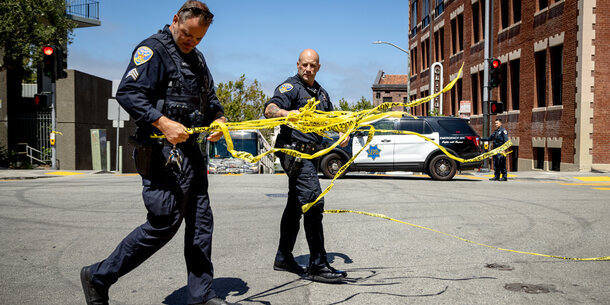The House Judiciary Committee held a four-hour field hearing in New York City Monday on “victims of violent crime in Manhattan.” The hearing featured personal testimony, but in the process of discussing this important subject, several speakers made misleading statements and attacks on Manhattan District Attorney Alvin Bragg, who recently brought felony charges against former President Trump. Below, we correct the record to help policymakers better understand New York City’s actual public safety environment.
Crime rose everywhere starting in 2020 — including in New York City. But the city remains one of the safest in the country, and some types of crime have dropped.
Several witnesses and Republican committee members left the misleading impression that New York City is uniquely dangerous, Manhattan in particular. That is inaccurate.
Since the pandemic began, crime has indeed risen in New York, with some increases continuing through 2022. But crime has increased everywhere in the country since 2019, and it continues to in many jurisdictions. According to a survey of 35 cities conducted by the Council on Criminal Justice, for example, several types of major crimes continued to rise last year.
Additionally, even with recent increases, crime in New York is far below record highs, and the city remains one of the safest in America. Of the 50 largest municipalities, it has the sixth lowest murder rate and the fourth lowest gun death rate in the country.
Speakers at the hearing singled out Manhattan and Bragg’s policies for special attention. But crime began rising well before Bragg took office and is now beginning to decline, especially in Manhattan. In 2022, shootings in Manhattan declined by double digits from the previous year, and homicides fell 15 percent — a faster drop than in the city as a whole.
There is no evidence that crime has risen disproportionately under progressive prosecutors or in blue cities.
Chief prosecutors are elected to dispense justice in an equitable and strategic manner, using their office’s limited resources to advance public safety and build healthy communities. In major cities around the country, voters have elected prosecutors dedicated to reducing the use of incarceration for minor crimes and drug enforcement and focusing resources on violent offenses.
There is no evidence that cities with these reformist prosecutors saw crime rise faster than those with more conventional district attorneys. On the contrary, the best research shows no relationship between progressive prosecutors and crime trends.
Nor is crime a “blue city” problem. Even in 2020, when the country saw a spike in murders, a review by analyst Jeff Asher, an expert who specializes in public safety data, found roughly equal increases in murders in cities with Democratic and Republican mayors. Firearm death rates, on the other hand, do vary dramatically by state. That accords with a report by Third Way, which noted that red states generally see higher murder rates.
Additionally, many progressive prosecutors won their offices on a pledge to increase transparency in how district attorneys make decisions about how they use their office’s resources. There is significant value in the community knowing what those policies are, and democratic accountability is increased through this process. For example, the Manhattan DA maintains a data dashboard and series of reports produced using the dashboard, for the public to examine trends related to racial justice and prosecution decisions.
Bail reform does not explain recent increases in crime and violence.
Several speakers at Monday’s hearing insisted that New York State’s recent bail reform law explained rising crime in the city. Research does not bear that out. According to a recent study, eliminating bail for most misdemeanors and nonviolent felonies reduced rearrest rates over the past two years in New York City — though rearrest rates did climb for a smaller portion of cases, such as those where the defendant had a recent violent arrest. Looking nationally, a new study by a pair of eminent criminologists found “no clear or obvious pattern” between bail reform and violent crime in 11 jurisdictions. Meanwhile, bail reform has helped thousands avoid unnecessary and profoundly harmful detention the city’s jail.
Additionally, it’s important to understand what bail reform is and how it works. The purpose of these policies is to reduce the number of people jailed while awaiting trial, especially those detained simply because they cannot afford to post money for release. Toward that end, New York’s legislation ended money bail statewide for most misdemeanors and nonviolent felonies. Judges retain the ability to set bail in almost all cases involving violent felonies and, after two revisions, many cases involving repeat arrests. Critically, the law was also implemented in January 2020 — two full years before Bragg took over as Manhattan DA.





